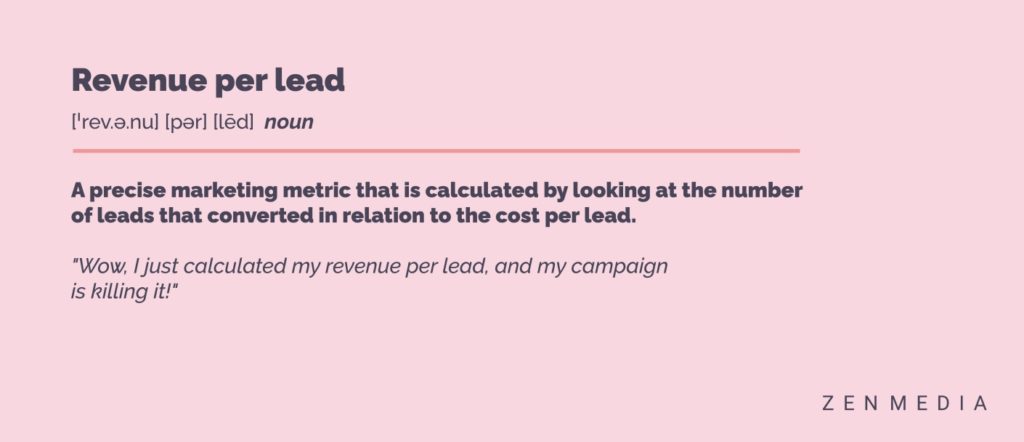Science has proven it time and time again: when given the option, people take the easiest route available.
This easy-route mindset is no different in the world of marketing. Now, don’t hate us for letting the secret out, but here it is: Marketers have taken the easy route for years. Certain marketing metrics and KPIs are easier to measure, but they don’t yield the most accurate results or demonstrate the most important information.
So why are marketers still using them?
It’s one part habit and one part laziness.
The digital world has transformed so quickly that it’s been challenging for marketers to determine which metrics mean the most, especially at the beginning of digital marketing and social media marketing. Think of the way Instagram updates its algorithm on a regular basis—you can’t count the number of updates and changes at this point. With fast-changing platforms and a long line of business executives breathing down the necks of their CMOs, marketers did what they could to create KPIs and metrics that would show whether or not the strategy was working.
But now, more than a decade since digital and social media marketing launched, it’s time for a change.
Marketers can’t take the easy route anymore. We need to reevaluate our KPIs and focus on the metrics that prove, without a shadow of a doubt, if a digital campaign is delivering. But before you go throw out all of your existing KPIs and start from scratch, let us help you out.
The buzziest marketing KPI in 2022
Think of this blog as the answers to the test you’re about to take. We’re going to make it simple for you and tell you the exact metric every marketer will be talking about this year. Three words, 14 letters, here it is:

Most marketers use metrics like cost per lead (the total ad spend divided by the number of leads) to measure the success of your marketing campaign. But not all leads convert to revenue, and even further, many companies struggle to convert leads into paying customers.
Revenue per lead is a more precise metric to determine if your campaign is working. It requires a higher degree of specificity when tracking leads. In order to determine revenue won from a single lead, you need to track the initial touchpoint with the customer all the way to the final moment they make a purchase.
Revenue per lead for B2B companies could look something like this:
Cost Per Lead = Total money spent / number of leads
% of leads that converted = number of conversions / total number of leads
That percentage will then tell you how much of the paid ads spend converted to revenue. When subtracted from the total ad spend, you’ll get your revenue per lead.
Of course, each company will have to look at this metric differently depending on the structure of their marketing campaigns. If you have leads coming from multiple different campaigns (and most B2B companies do), then each campaign must be assessed separately. Marketers must parse out the data to determine which campaign resulted in which lead, and from there, calculate revenue per lead. It’s not the easiest metric to track, but it’s an important way to assess the effectiveness of your campaigns.
Should you throw out old KPIs?
Conventional wisdom applies here: don’t throw out the baby with the bathwater.
Every marketer knows that companies thrive on data and, in order to continue with marketing tactics, you have to prove that they are generating traction. KPIs like cost per lead, customer acquisition cost, customer lifetime value, and lead-to-customer ratio can still help you demonstrate the movement that your campaign has generated.
Don’t reinvent the wheel if you don’t have to, but add to existing strategies to make them more precise. Key performance indicators tell us just that: how our campaigns are performing among our intended audiences and customers. Marketers should regularly re-evaluate their strategies to determine if campaign efforts are effective, and KPIs help us determine this.
Like we said before: many marketers have gotten lazy. Perhaps it’s the pressure of creating successful campaigns for platforms with constantly-changing algorithms that has caused many to try a one-size-fits-all approach (instead of adjusting and re-evaluating on a regular basis).
It’s time to wake up, drink that 2 p.m. cup of coffee, and look at your KPIs with a fresh perspective.
How to update your marketing KPIs for 2022
We’ve established that every marketer will be thinking about revenue per lead in 2022. But what about your strategy? How can you select KPIs that determine whether or not your marketing efforts are generating results? And how can you nail down a complex metric like revenue per lead?
In 2022, brands need to embrace the digital sales models in order to succeed. The changes brought about by the pandemic are here to stay, and it’s time that marketers accept that too. With this in mind, marketing KPIs should be crafted to measure digital campaigns with a high degree of specificity so that you can hone in on the most beneficial initiatives and set aside the ones that don’t work.
Related reading: How To Sell in 2022
Use the revenue per lead KPI as a framework. The mindset driving marketers to consider revenue per lead is that brands need to know if their leads are generating impactful amounts of revenue. It helps reveal whether or not your company’s marketing efforts are costing big bucks and making small bucks, or vice versa (for your sake, we hope you’re making the big bucks).
Do your research and understand the landscape of digital marketing in 2022. Revenue per lead will be determined by your company’s ability to hone in on the most impactful brand marketing strategies, the ones that customers care to interact with.
Again, let us give you the answers to the test. Here’s how you can update your marketing strategy and embrace those initiatives that generate the most revenue per lead.
Email marketing will be critical (again) in 2022. You’re probably already measuring the open rate, click-through rate, and bounce rate, but the most important metric you can track is the conversion rate. This KPI will help you determine revenue per lead for your B2B email marketing campaign because you will be able to see how many of your subscribers complete a targeted action—usually, that action is purchasing a product or requesting a demo.
In social media marketing, in order to get the most out of revenue per lead, you should focus on engagement rates and conversions. Engagement rates (a category that includes everything from likes to followers and shares) tell you how many of your followers are seeing your brand’s posts and interacting with them. It gives you insight into the impact of your content. Conversions, such as clicks on a link in an Instagram story or a Twitter post, will tie more closely to revenue per lead—especially if you are sharing links to product pages or that prompt a purchase.
Related reading: The Ultimate Guide to B2B Social Media Marketing
Revenue per lead is a single KPI that can transform your marketing strategy. It provides insights into the efficacy of your campaigns, but it can also help you (and your team) shift your perspective about digital marketing. When you measure more precise metrics (instead of general ones like clicks and bounce rates), you get more clarity about your audience’s interests. You can gather more targeted information about consumers who follow through on a purchase, as opposed to those that just peruse. With this information in hand, your marketing efforts will be more exact and more tailored to the buyer’s experience.
Revenue per lead is hard to measure, but it’s an important new strategy emerging in the marketing world this year. Set aside the extra time and effort to measure revenue per lead, and you’ll find that your marketing becomes more precise, more impactful, and more profitable.







